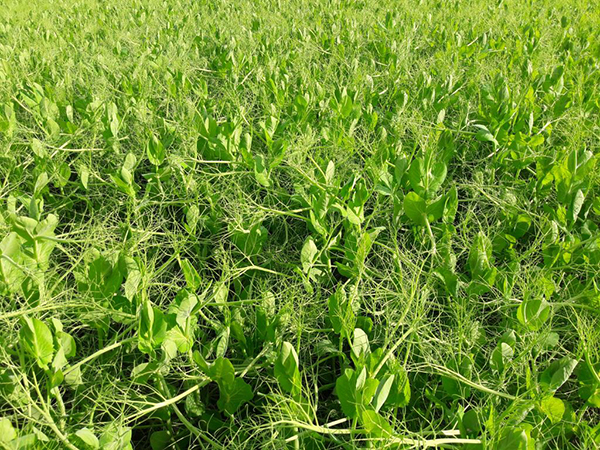Blog
Tips for sowing peas and beans

"Junkkari's recommendation is to sow large seeds from the fertiliser hopper on Maestro and SMD series machines and adjust the bottom flap to setting 3-4 (depending on the variety). This allows the use of a fertiliser roller with larger gaps, where the large seed will settle better. This prevents the beans from wedging between the pins of the seed roller and avoids possible breakage of the roller."
The cultivation of peas and broad beans has increased strongly. It offers a good alternative to cereals and oilseeds in the crop rotation. The low need for fertiliser and the reduction of disease pressure on the land also make peas and beans a tempting choice. Many farmers are now considering trying a new plant, but there are questions about how to grow them and especially how to sow them.
The first thing to consider when growing peas and beans is the choice of plot. Clay or mineral soils are favourable, but organic soils are not the best, as nitrogen is available in the soil for a long period of the growing season. In this case, the plant will continue to grow until autumn and will not be ready for threshing.
Crop rotation should be taken into account in the sowing plan. Peas or beans should not have been grown on the same plot for 4-5 years. The sowing recommendations for peas per hectare should also be reviewed. In recent years, the recommendations have been lowered from a good 100 plants/m² to around 65-75 plants/m², especially for crops intended for fodder use. The amount of seed used has an influence on the wilting of the crop. Too dense a crop is susceptible to wilting and threshing becomes a challenge.
Beans and peas are large in size, so the seeder's bottom flap settings are at a higher setting than typical for cereals. For Junkkar machines, the recommended setting for the bottom flap is 3-4 (depending on the variety) for onions and beans , with the equivalent setting for cereals being 1. This means that when the calibration test is carried out, the seeds come out of the feeder freely and do not bounce. Junkkar's recommendation is to sow large seeds from the fertiliser hopper on Maestro and SMTD series machines. In this case, a fertiliser roller with larger gaps is used, where the large seed will settle better. This prevents the beans from wedging between the pins of the seed roller and avoids possible breakage of the roller. In general, the need for fertilisation is low, so fertiliser can be applied from the starter box. The pusher roller on Simulta models allows sowing from the seed or fertiliser hopper.
The recommended sowing depth for beans and peas is 5-7 cm, which is 1-2 cm deeper than for cereals. However, many farmers sow peas at the same depth as cereals, i.e. 4-5 cm. A large seed sown deep in the ground will receive sufficient moisture from the soil even in a dry spring. In hard clay soils, a shallow seed may float to the surface after a heavy rain. In the past, the predominant practice was to sow peas through fertilizer coulters. This practice dates back to a time when soils were heavily worked and seed coulters had low coulter pessures. At that time, sufficient sowing depth could only be achieved through fertiliser coulters. In machines with separate fertiliser coulters, the row spacing is reduced to 25 cm, while the row spacing of the seed coulters is 12,5 cm. The sowing depth can be adjusted by increasing the coulter pressure and the height of the machine. In general, for sowing peas and beans, the coulter pressure must be high, regardless of the machine.
Fertilisation of legumes
Fertilisation of peas and beans should be moderate, depending on the soil. In addition to nitrogen, the plant needs other nutrients, which should be applied according to the soil sample. If the seed drill is equipped with a small seed box with starter, the starter fertiliser or fertiliser can be sown through it. In this case, the peas are in the fertiliser hopper and there is no need to put fertiliser in the seed hopper. This method avoids the need to empty the seed hopper excessively.
Peas and beans are usually sown early as the first crops due to their long growing season, so sowing time is soon at hand. These are good guidelines for sowing peas and beans. It is also worth looking at the growing guides available on seed merchants' websites.







